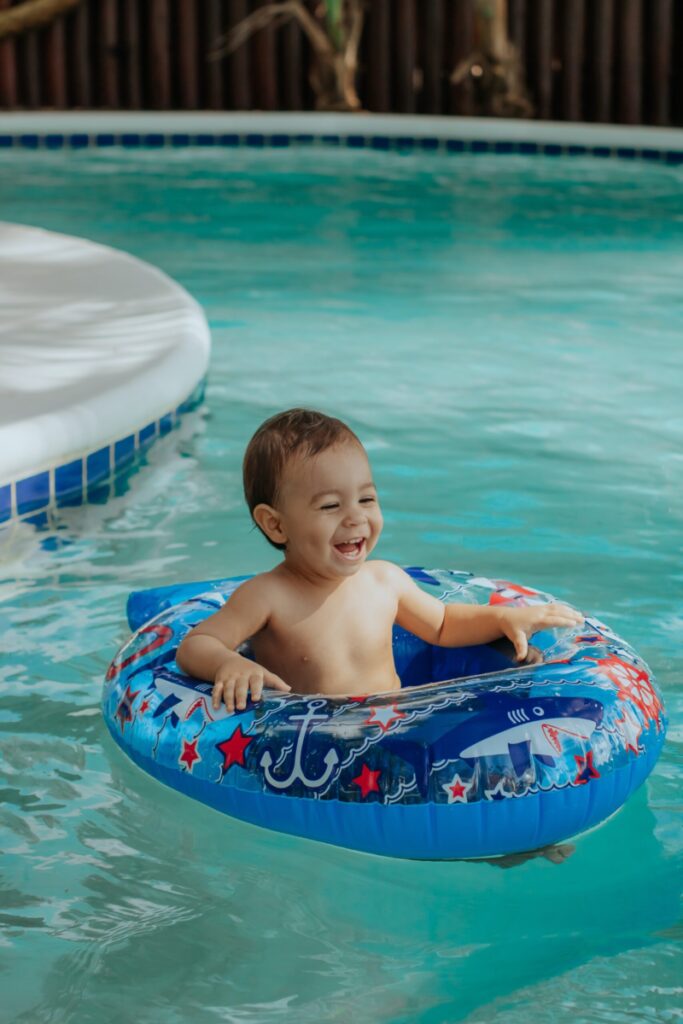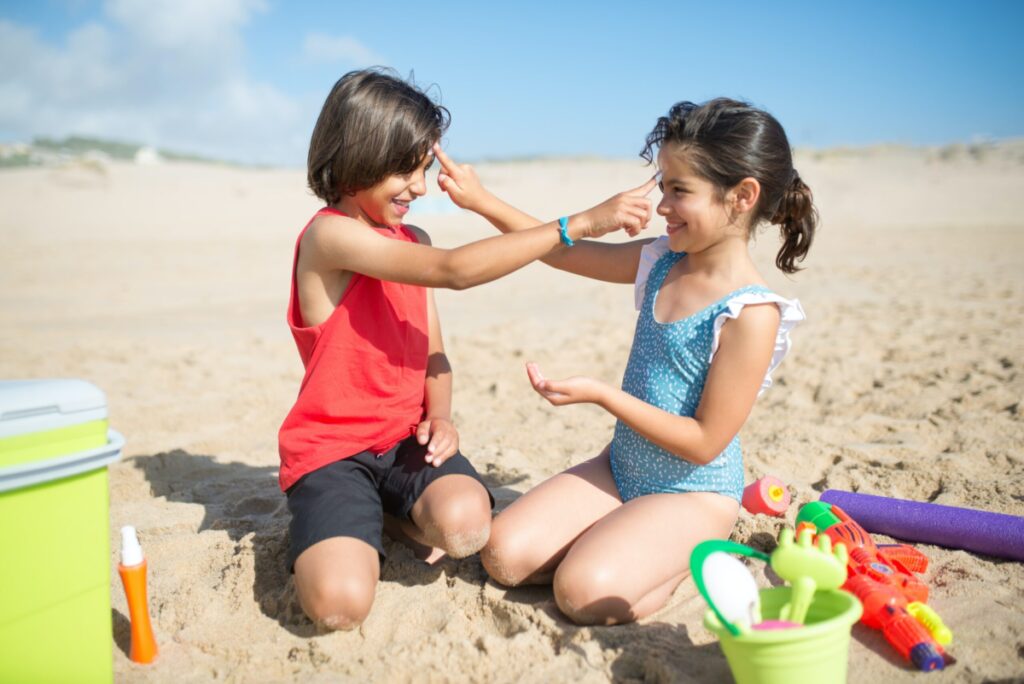Water safety with kids
It’s hard to imagine summer fun without playing in and around the water! Kids of all ages love it. It’s a great way to stay cool and burn off excess energy. But as much as we hate to think of it, the truth is drowning is a real risk. The risk is highest amongst children ages 1-4 making water safety with kids a major public health issue. In fact, according to the CDC, More children ages 1–4 die from drowning than any other cause of death except congenital disabilities. For children ages 1–14, drowning is the second leading cause of unintentional injury or death after motor vehicle crashes.
Now that we’ve sufficiently ruined your day, we’ll try to boost your mood with some of our top tips for water safety with kids and ideas to enjoy the water in a fun and safe way!
Got a pool? Use layers of protection!
The key to childproofing a pool at home is to use more than one water safety barrier!
- Secure your pool with fencing at least 4 feet high that surrounds all four sides and doesn’t have gaps.
- Consider a tight cover or netting.
- Use safety locks on doors that lead to yards with bodies of water.
- Consider a pool alarm as well if you have young mobile kids.
- Remove all pool toys from the pool when done swimming.
- Empty or securely cover baby pools after use
- Consider a water submersion device, especially if staying at a vacation rental or accommodation without barriers around the pool.
Assign a water watcher in group swim situations
- Group swimming situations can be loud and chaotic, and drowning can sadly be silent and subtle.
- Always assign a designated water safety watcher because if “everyone” is watching, often it means no one is watching.
- Even better is a physical item to identify the water watcher, like a baton or lanyard that can then be handed off when the next water watcher takes over.
Swim lessons early!
The skill of swimming is the most important step for water safety with kids.
- It is never too early to start!
- Teaching kids to swim does not increase the risk of drowning; it reduces it!
- Consider infant survival swim courses if available in your area.
Floaties are a great safety tool but not a substitute for swim safety skills.
- Floaties/coast guard certified life jackets should be used in open water situations like the beach or a boat or can be helpful if you are managing more than one little one who can’t swim.
- Floaties keep kids in head-up feet down position that doesn’t facilitate swimming and can give them a false sense of confidence.
CPR training
- Even with optimal safety measures, accidents can happen. CPR training is an excellent skill that may save a life one day.
- Find courses in your area here.
Don’t forget small bodies of water.
Safety around pools and open water is more obvious, but it is just as important to consider other water hazards at home.
- Block off pet water bowls.
- Empty buckets and other standing water after use.
- Secure bathrooms and toilets with child safety latches.
- Empty the bath and remove all bath toys after use.
Talk to your kids about water safety.
- Talk to your kids about being safe around the water as soon as possible.
- Establish rules and expectations around water that you remind them of often.
- Set boundaries for where they can go and reinforce that they should never go in the water without a supervising adult.
Ideas for water fun if you don’t have a pool nearby!
As temperatures get higher and kids get bored, a pool can sound like the perfect solution. But a lot of us don’t have one and may not have easy access to one in our town. Here are some other fun water activities to stay cool and have fun! And don’t forget sun protection! Read about the best tips for sun protection in babies and kids here.
- Sprinklers – old school, but always fun.
- Water table, or fill a bin with water and assorted bowls and cups
- Splash pad – your town may have a public splash pad in a nearby park, or there are affordable versions that attach to a hose you can buy for yourself.
- Slip and slide
- Check out more fun ideas here!
- And here are some great ideas specifically for toddlers.
For more info and resources about water safety, check out these helpful sites.
Healthychildren.org water safety and young children



